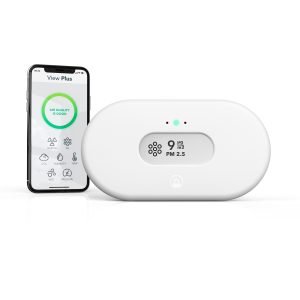As the fashion industry grapples with its environmental footprint and faces mounting regulatory pressure, one London-based womenswear brand is embracing the future—byte by byte. Nobody’s Child, known for its accessible, trend-led clothing and commitment to responsible sourcing, is not only responding to change but leading it. At the heart of its strategy? Digital Product Passports (DPPs).
Since 2023, Nobody’s Child has been experimenting with DPPs—scannable digital records that track a product’s journey from raw material to finished garment. Now, with a full rollout planned for Autumn/Winter 2025, the brand is positioning itself at the vanguard of a technological shift that will soon become mandatory across the European Union.
But as CEO Jody Plows explains in conversation with Kirsty McGregor, this transformation has not been seamless. From onboarding suppliers and managing unprecedented data loads to recalibrating consumer experience, the journey into digital transparency has revealed both opportunities and hard truths.
From Pilots to Production: The Evolution of a DPP Strategy
Nobody’s Child began its DPP journey in 2023 with a modest pilot on its denim products. In less than two years, that pilot has grown into a company-wide commitment. By late 2025, every product from the brand will include a QR code—a gateway into 110 data points detailing the item’s material origins, environmental impression, production journey, and circularity potential.
According to Plows, four pilots paved the way for this broader vision. Starting with denim—chosen for its well-documented sustainability challenges—the brand expanded its tests to cover 50 styles across seven suppliers.
“We’re at a really exciting point,” says Plows. “From summer 2025, everything that goes into production will carry a digital passport. It’s no longer a test—it’s the new baseline.”
This move places Nobody’s Child far ahead of the EU’s 2030 deadline for mandatory DPPs, signaling that the brand sees value in data-driven transparency far beyond regulatory compliance.
The Numbers Game: Data at Unprecedented Scale
The most pressing challenge? Data collection. DPPs demands a level of detail that’s uncommon in most fashion supply chains. Every garment’s passport must include information across 110 distinct data fields—ranging from the origin of fibers and dyes to water consumption, energy sources, and labor practices.
“That’s the biggest hurdle,” Plows admits. “Historically, fashion supply chains have been quite opaque. We’re asking our suppliers to dig deep—back to where their yarns are sourced, what energy their mills use. It’s a whole new mindset.”
And while Nobody’s Child has long-standing relationships with many of its suppliers, even these partners required support in adjusting to this new digital landscape. “Some of the questions we’re asking, they’ve never needed to answer before. We’ve had to hold their hands, work together to establish new systems.”
Supply Chain Transformation: From Tier 1 to Tier 5
One of the more ambitious aspects of Nobody’s Child’s approach is its pursuit of Tier 5 traceability. While most brands stop at Tier 3—tracking the suppliers that handle raw materials—Nobody’s Child is going deeper, tracing fibers back to their very origin, whether that’s a cotton farm or a recycled polyester facility.
“It’s been incredibly illuminating,” says Plows. “We’ve discovered which of our partners are using renewable energy. We’ve identified water-stressed regions we didn’t previously realize were in our supply network. This level of visibility helps us set better sustainability targets and flag ethical risks.”
The benefits of Tier 5 traceability go beyond sustainability. The data allows for more accurate product lifecycle assessments, supports risk mitigation, and opens the door to more informed consumer communication.
Making It Work in Retail: QR Codes, UX, and the Customer Journey
Digital product passports may be built for compliance, but Nobody’s Child sees them as powerful consumer engagement tools. Shoppers scanning a product’s QR code are directed to a dedicated page on the brand’s website that details its provenance, environmental impact, and even care and repair tips.
“This is about more than ticking regulatory boxes,” Plows says. “It’s about giving our customers real information. They want to know where their clothes come from, how they’re made, and how they can make them last.”
This investment in transparency is backed by customer data. Quarterly surveys show a growing appetite for sustainability insights, while social media analytics reveal strong engagement with content about materials, manufacturing, and responsible fashion choices.
Platform Power: The Role of Fabacus
Nobody’s Child’s ability to innovate at this scale is in no small part thanks to its parent company. Owned by Andrew Xeni, who also runs the data platform Fabacus, the brand benefits from tight integration with digital tools designed for product authentication and supply chain traceability.
Fabacus’s role in the DPP rollout cannot be overstated. The platform has provided the infrastructure to gather, verify, and centralize the massive data volumes required for each passport, while also helping with real-time syncing of QR codes, stock-keeping units, and supplier inputs.
This tight alignment between product and platform may give Nobody’s Child a head start that other fashion brands—especially independents—will struggle to replicate.
What About Retailers Like M&S?
Nobody’s Child operates across multiple distribution channels, including third-party retailers like Marks & Spencer (M&S). So how does the DPP system work when a customer buys a product outside the brand’s direct-to-consumer ecosystem?
“We’ve structured it so that any customer, regardless of where they shop, can scan the QR code and be redirected to our site,” explains Plows. “They can still access the product passport. What we don’t currently do is share the raw data with retailers like M&S—but that could change as the industry aligns on DPP standards.”
This approach strikes a balance between control and accessibility, allowing the brand to maintain the integrity of its data while still ensuring a seamless customer experience.
DPPs as a Strategic Advantage
While many brands still view DPPs as a future burden—an inevitable cost of doing business—Nobody’s Child has flipped the narrative. By adopting DPPs early, it’s laying the groundwork for a competitive edge in a landscape increasingly shaped by transparency and sustainability.
“This is where the industry is going,” says Plows. “If we tried to implement this retroactively in five years, it would be much harder. Now, we’re building the muscle.”
The brand believes DPPs will become as fundamental to fashion operations as sizing charts or fabric swatches. Already, internal teams are using the data to guide sourcing decisions, identify carbon hotspots, and recalibrate design processes.
Advice for the Industry: Start Early, Move Incrementally
For brands watching from the sidelines, Plows has practical advice:
- Start with your suppliers. Onboarding is key. Build trust and offer support.
- Test in phases. Don’t roll out DPPs across your entire catalog at once. Learn from pilots.
- Invest in technology partners. Platforms like Fabacus can turn overwhelming data demands into manageable systems.
- Think beyond compliance. DPPs aren’t just regulatory tools—they’re levers for sustainability, customer loyalty, and brand differentiation.
Plows’ final point is perhaps the most resonant: “The more we know, the better we can do.”
No comments yet.







